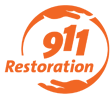How To Clean Up A Sewage Backup From Your Basement
A septic tank is disgusting. If you find sewage in your basement, it is important to get rid of it quickly to protect your family. You can have your home restored in a matter of days by a professional, or you can clean up the sewage backup yourself. Follow these steps to remove a sewage backup from your basement.
How To Clean A Basement Sewage Backup
Sewer backup cleanup is likely to be unpleasant. Apart from the obvious mess, sewage can also cause severe health problems. These steps will help you clean up a basement sewer backup.
1. Protect your pets and children
Keep your pets and children away from raw sewage backups if you have small children. This will prevent them from getting sick. Young children and toddlers should be supervised by an adult or an older child. Place pets in a kennel, pen, or cage and keep them away from sewage backup.
2. Use safety equipment
Safety equipment should be worn by anyone who is working with raw sewage. When cleaning up a sewage backup, you want to keep as much skin as possible. Rubber boots, waders, long sleeves and rubber gloves are all necessary for cleanup. To prevent sewage from getting into your mouth or nose, you should also wear goggles, a ventilator and a face shield. All open wounds should be cleaned, disinfected, and bandaged immediately. Wash your hands, wrists and neck thoroughly.
3. Get rid of your basement
It can be very overwhelming to smell raw sewage. To help with air circulation, open windows and vents in basement. To draw fresh air in from the above, fans can be placed at the top of stairs. You can also take frequent breaks if you are unable to ventilate your basement. This will ensure that the smell doesn’t cause you any health problems.
4. Get rid of raw sewage
A pump is the best tool to remove sewage backups. A pump will quickly clean up raw sewage and limit damage. Most equipment rental companies have pumps. You should always be on the lookout for any solid waste as they can block the inlet, causing slow cleanup. You can also clean up sewage backups with a dry-wet vacuum. Although a shop vacuum can quickly collect sewage, the main problem is the size of your tank. Your vacuum may need to be emptied many times before it stops leaking.
A mop and bucket are good options for sewage cleanup. However, they take a long time. This should only be used as an emergency or while you wait for a restoration company to arrive. Use a mop to soak up the sewage and then strain it into a bucket. Continue this process until you are done with all the sewage. No matter how you deal with a sewage backup – do not pour anything down the sink. You can either bag the waste or take it outside. Use your garden hose for sewage removal and solid waste disposal.
5. Toss the damaged materials
After a sewage backup, it is impossible to clean everything up. To protect yourself, you should throw away any items that have been contaminated with sewage, such as electronics, boxes and cabinets. If in doubt, throw it away. It is almost impossible to clean carpeting and padding after a basement sewer backup. Fabric furniture is the same. It’s not easy to clean the furniture’s exterior, but it is much easier to clean the interior. Place smaller items in heavy-duty bags. Then, cut the carpet into smaller pieces and roll it up. For pickup, move furniture and cabinets directly to a tree lawn.
6. Use soap to clean your basement
You can now clean your basement after removing any damaged items. You can clean your basement with soap that does not produce too many suds. Wash anything that has come in contact with the sewage. Use a mop to clean non-carpeted floors. Next, use a sponge or a rag to scrub any other surfaces. Mix a new batch of soap and dump the soap out when it has stopped making suds.
7. Dry your basement
To prevent mold growth, clean out the basement. Although house fans can dry your basement, they are inefficient. Instead, you can use high-velocity fans or structural drying dehumidifiers. They are quick and easy to use, and they dry your home quickly. You can rent fans or dehumidifiers at most equipment rental businesses. For small basements, you can use two to three fans and one humidifier. You will need more equipment to dry larger basements. To speed up drying, make sure to check the fans every hour and move them as necessary. Most homes can be dried in 12 to 24 hours. The greater the chance of mold and other odors, the longer your home takes to dry.
8. Clean your basement
You must disinfect your basement after drying it. Use a cup of bleach to 1 gallon of water to clean up any sewage. Spray bottles can be used to spray large flat surfaces and walls. Allow the bleach to dry and then repeat the process until the mold and bacteria have died.
9. Rebuild if necessary
Finally, you can rebuild your home. The cost of renovations depends on the size and extent of the sewage, but they often include new carpeting, replacement of cabinets and appliances, as well as repairing any damaged walls.
How Can You Avoid The Health Risks Of Cleaning Up A Sewer Backup?
There are many health risks associated with a sewer backup in your basement. All of that waste can become a breeding ground to bacteria, viruses, parasites, and other diseases that can cause serious illness. You should take care when cleaning up all the waste that has been contaminated by sewage back into your home.
What safety equipment should you use for sewage backup clean-up?
- Rubber Boots and Waders – At the minimum, wear rubber boots that reach your knees. Rubber waders should cover your chest if possible.
- Pants – For added protection from sewage, always wear pants.
- Long Sleeves – Wear thick, water-resistant long sleeves that completely cover your upper body.
- Long rubber gloves – Wear long gloves that protect your wrists. To prevent sewage from reaching your skin, wear them over your long-sleeve shirt.
- Safety glasses or goggles? Safety glasses are fine, but goggles provide better protection from sewage splashing into your eyes.
- Ventilator – Wear a ventilator that covers your nose and mouth. Do not choose a ventilator made of cheap fabrics. Instead, look for one that has a solid exterior.
- Face Shield – While it is optional, a face shield can be worn to protect your face from sewage.
Is It Safe To Clean Up Raw Sewage On Your Own?
While you can clean up a basement sewage backup, make sure to wear the appropriate safety equipment. You should always work in an area that is well-ventilated and take frequent breaks. Don’t use dehumidifiers or household fans. Use high-velocity air movers and structural drying humidifiers instead. If you don’t, bacteria and mold will grow to make cleaning up more difficult. Anything contaminated with sewage should be thrown away. It’s nearly impossible to kill all the organisms growing within, even though you can clean them off. You should have the equipment and time to safely clean up raw sewage. It’s best to call in a professional restoration company if you are unable to start cleanup for several hours or even days.
Get Your Sewage Backup Cleanup Now
911 Restoration of Las Vegas has experts who can help if the sewage backup is too large or you don’t have the right equipment. Call (702) 623-0019 today for a free visual inspection on sewage backup cleaning services.




